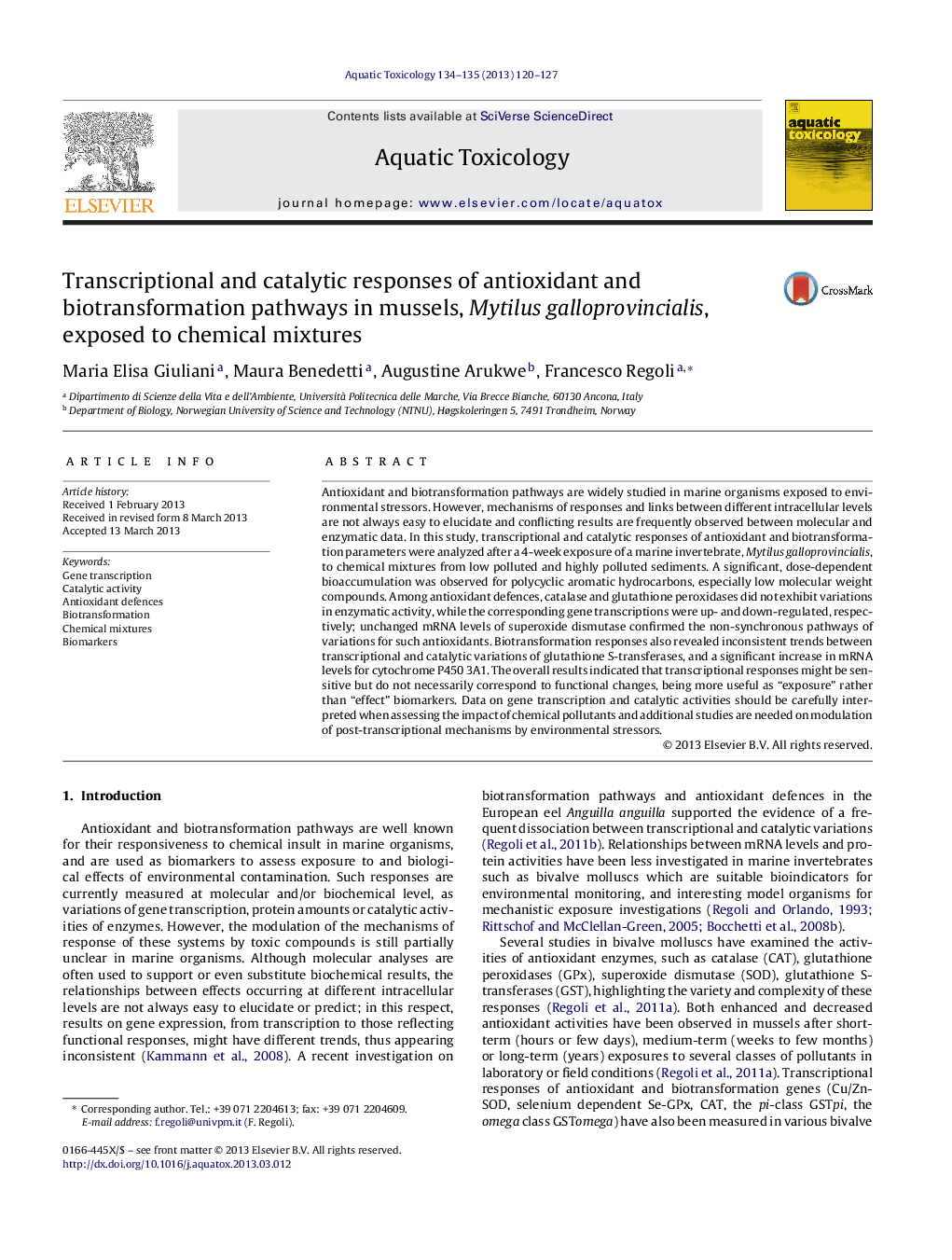| Article ID | Journal | Published Year | Pages | File Type |
|---|---|---|---|---|
| 4529518 | Aquatic Toxicology | 2013 | 8 Pages |
•Transcriptional and catalytic responses to chemical mixtures were compared in mussels.•Inconsistent trends were measured for both antioxidant and biotransformation pathways.•Gene expression does not correspond to functional effects.•Variations of mRNA levels are sensitive as “exposure” rather than “effect” biomarkers.•Transcriptional and catalytic results should be integrated in biomonitoring studies.
Antioxidant and biotransformation pathways are widely studied in marine organisms exposed to environmental stressors. However, mechanisms of responses and links between different intracellular levels are not always easy to elucidate and conflicting results are frequently observed between molecular and enzymatic data. In this study, transcriptional and catalytic responses of antioxidant and biotransformation parameters were analyzed after a 4-week exposure of a marine invertebrate, Mytilus galloprovincialis, to chemical mixtures from low polluted and highly polluted sediments. A significant, dose-dependent bioaccumulation was observed for polycyclic aromatic hydrocarbons, especially low molecular weight compounds. Among antioxidant defences, catalase and glutathione peroxidases did not exhibit variations in enzymatic activity, while the corresponding gene transcriptions were up- and down-regulated, respectively; unchanged mRNA levels of superoxide dismutase confirmed the non-synchronous pathways of variations for such antioxidants. Biotransformation responses also revealed inconsistent trends between transcriptional and catalytic variations of glutathione S-transferases, and a significant increase in mRNA levels for cytochrome P450 3A1. The overall results indicated that transcriptional responses might be sensitive but do not necessarily correspond to functional changes, being more useful as “exposure” rather than “effect” biomarkers. Data on gene transcription and catalytic activities should be carefully interpreted when assessing the impact of chemical pollutants and additional studies are needed on modulation of post-transcriptional mechanisms by environmental stressors.
